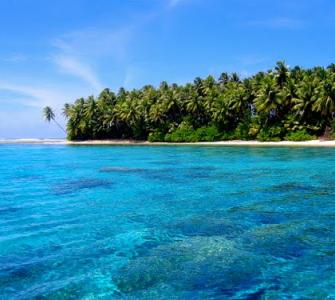CSF is partnering with the Marshall Islands Marine Resources Authority (MIMRA) and the Marshall Islands Conservation Society (MICS) to analyze the economic benefits of protecting or restoring coastal and marine areas in Majuro Atoll in the Republic of the Marshall Islands (RMI) from damaging activities such as overfishing, mining, and pollution. The project will also consider the role of marine and terrestrial protected areas in maintaining or enhancing these benefits. This effort is one of several analysis projects being conducted in Micronesia following CSF's Economic Tools for Conservation in Micronesia course held in March of 2012.
With the highest population in the RMI, Majuro Atoll faces some of the most intense pressure on its natural resources. Much of the southern side of the atoll is densely populated, and marine and terrestrial areas are degraded by development, over-harvesting, and pollution. In contrast, most of the islands on the northern side of Majuro have few if any permanent inhabitants and are used for recreation, subsistence, and small-scale commercial fishing for local markets. Recently, there has been increased interest in sustainable resource management on Majuro, as people are noticing decreasing fish size and abundance as well as damage to reefs. Protecting these undeveloped areas can help ensure that these resources are available for future generations.
Measuring the benefits and costs to different stakeholders of managing natural resources can improve decisions about where to focus efforts. This work will provide valuable information that will help protect Majuro Atoll’s biodiversity and ensure the future availability of natural resources.

